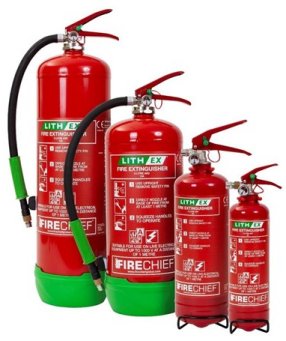Lithium Ion Battery Types

All lithium based batteries are made from lithium-ion cells as Li+ is the ionic species that is transferred between the electrodes via an electrolyte composed of a lithium salt dissolved in organic solvents.
The nomenclature used to describe the cell types are an attempt to differentiate the available options:
a) Lithium (Metal) Battery
This type of battery is made from cells where one of the electrodes (the anode during discharge) has metallic lithium as its active constituent. For practical / safety reasons these are primary, non-rechargeable, cells. For consumers, these are typically cylindrical (AA & AAA) and button cells with MnO2 or FeS2 as the other electrode.
b) Lithium-Ion Battery
This type of battery uses cells in which the lithium metal is replaced with a lithium insertion compound as the active ingredient; this is very commonly lithium-intercalated graphite, LixC6, which at the crystallographic level consists of Li+ ions distributed in-between the layers of graphite. The other electrode is also a lithium ion insertion compound, for example nickel manganese cobalt oxide or lithium iron phosphate, leading to the common description of these cells as ‘rocking chair’ batteries. These are secondary, rechargeable, batteries as the Li+ can be shuttled back into the graphite electrode in order to recharge the cells.
This group of cells is further subdivided depending on their form, packaging and construction. Importantly, however, from a battery chemistry viewpoint all of the following cell types are the same as they can be made from the same electrode materials and electrolyte (lithium salt and solvents); the physical differences do have a small influence on the discharge characteristics and hence the cell’s nominal voltage may be slightly different. Clearly the capacity of an individual cell is size-dependent (quantity of electroactive materials) which is influenced by its form – it is relatively easy to make a larger pouch cell.
In terms of their main differentiating characteristics, the available types are:
i) Cylindrical Cells
These Swiss roll design cells, called jelly roll in the USA, have a solid, ‘hard’, fine meshed, polymer film separator and a liquid electrolyte composed of a lithium salt dissolved in a mixture of volatile organic solvents. In order to keep the individual cell components in intimate contact, a hard (metal) case is required. Cylindrical cells come in a variety of different sizes with the 18650 format being one of the most popular; examples of the cell’s applications include their use in power-banks, laptop computers and electric cars (Tesla).
ii) Pouch Cells
These cells are frequently called lithium polymer, LiPo or Li-poly batteries (battery is incorrectly used interchangeably with cell); when used to power drones, etc., they are normally called hobby batteries. They are the ‘soft’, flat cells of laminar construction commonly used in phones, tablets and modern laptop computers where they are protected by the device’s case. Large format pouch cells are used in battery modules for transport (EV) and energy storage (ESS). The use of the term ‘polymer’ in their descriptions is somewhat confusing as these batteries do not contain a solid-state lithium-ion-conducting polymer as the electrolyte; true solid-state cells are in development but are presently limited by the low conductivity of the polymers. Instead, these cells have a gel polymer electrolyte (GPE) which replaces the plastic mesh and liquid electrolyte found in cylindrical cells; the gel is a semi-rigid, open-microporous polymeric network saturated with the electrolyte solution. Lithium polymer cells are light, flexible and easily shaped but still contain (‘trapped’) liquid electrolyte.
Secure Shopping
SHA-256 SSL encryption
Exclusive Online Pricing
Low prices, high quality products
Free UK Delivery
For orders over £900
